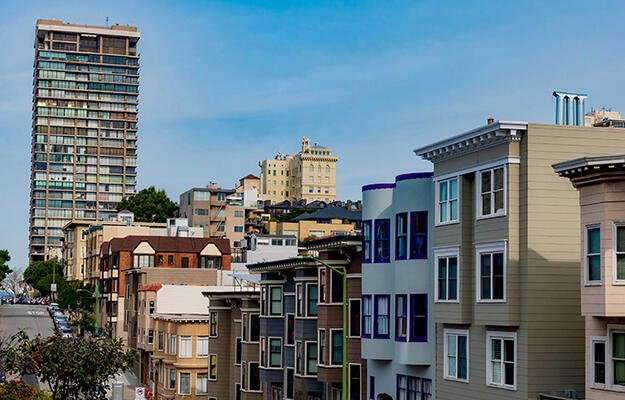
How to Put Racial Equity at the Center of Neighborhood Investment
The effects of discriminatory policies limit opportunities for people of color and their communities. The lingering effects of redlining and racial covenants have left many historic, once-thriving Black neighborhoods in need of revitalization as hypervacancy, blight, and neighborhood social and economic distress restrict opportunities for residents to build wealth for future generations.
New investments can revitalize neighborhoods that have been historically excluded. But as policymakers and planners seek to revitalize Black neighborhoods, they must confront the systemic disinvestment embedded in the history of these places and promote racial equity.
Racial equity ensures that a person’s race does not determine their opportunities or outcomes for success. Putting racial equity at the center of revitalization efforts acknowledges the need to dismantle the historic injustices in communities. This lens not only changes the usual approach to neighborhood investment, but it also changes the usual results.
Communities across the US are testing new strategies to tackle racial disparities in homeownership and asset -building, and to improve neighborhood investment. As we celebrate Black legacy this month, we need to use a racial equity lens to develop solutions that help bridge the stark opportunity gaps between Black and white neighborhoods.
Ensure communities’ needs are heard
Local government leaders help shape communities’ economic development and growth agendas. But when leaders’ priorities don’t align with residents’ needs, community rebuilding efforts and new development can miss the mark by excluding people of color and severing their sense of belonging to the neighborhood.
To ensure social cohesion, some local governments have invested in departments for citizen engagement, community engagement officers, and cultural ambassadors to bridge that gap and foster connections between people and the places where they live.
A sustainable vision for a community mirrors its residents’ priorities. But communities of color have been historically excluded from neighborhood decisionmaking. Acknowledging the need for equity in community engagement can ensure local housing policy solutions are more accessible. Place-based investments, when done inclusively, create a collaborative environment that empowers local resident ownership and elevates community leadership.
The Chicago Prize recognized that traditional investments in neighborhoods do not always match the community’s needs or offer opportunities for capacity and asset building to nonprofits working on community solutions. To address this challenge, the prize funding was established to promote innovative strategies tailored to the community’s interests that increase economic and social mobility, while ensuring current residents are not displaced in the process.
Use language that fosters equity
Neighborhoods in need of revitalization are often associated with characteristics like “distressed,” “unsafe,” and “lonely.” Many Black neighborhoods have also been conflated with these descriptions, which threatens their ability to attract investment.
Strategic messaging about race can affect how we think about the policy and justice work outcomes. Local government agencies may build in time for sharing information on their work to build relationships with the community. This can often look like strategic communication, which, although essential for messaging, does not include the deep participatory processes that advance equity.
Authentic community engagement involves participants from the work’s concept stages all the way through execution. It requires more than just communicating project goals, but also taking the time to intentionally develop community partnerships and establish roles for all project members.
As part of advancing racial equity, Dubuque, Iowa, local government employees (PDF) have received training on inclusive communication, including scenario-based workshops, as well as instruction on communicating cultural differences and navigating conflict. Inclusive Dubuque has been an important change agent in seeding these efforts. Through its network, it has offered equity education through trainings, tools, peer-learning workshops, and other resources to ensure capacity building and shared understanding around equity language.
Focus on empathy in new developments and practices
Understanding the past is necessary to developing successful neighborhood revitalization strategies. Many communities of color have faced trauma from exclusionary policies and barriers to opportunities. Recognizing the presence of neighborhood trauma can be the first step to encouraging urban renewal.
Social empathy is the ability to understand people by perceiving or experiencing their life situations and gaining insight into the structural inequalities and disparities they’ve faced. Empathy can be a direct path to social justice, as the neighborhood should be considered in the context of access to opportunities, residents’ experiences, and the role of historic policies.
Research on the revitalization efforts for Columbus, Ohio’s Southside neighborhood pushes for planning efforts beyond the “brick and mortar” to encourage developing social capital and empathy. Community groups use this approach to develop positive narratives for neighborhood youth to create better experiences for themselves and their families. Putting empathy at the center of equitable community development can enhance community engagement and begin to address the underpinnings of structural racism.
Empathy—along with shifting how we think of a place, engaging the community, and calling for culturally competent leadership—can help expand opportunities in neighborhoods undergoing revitalization. Strong community-level participation encourages revitalization efforts that build the sense of belonging and ownership in neighborhoods, which are key to advancing racial equity.
This blog post originally appeared on Urban Wire, the blog for the Urban Institute.
Photo by mavo/Shutterstock


